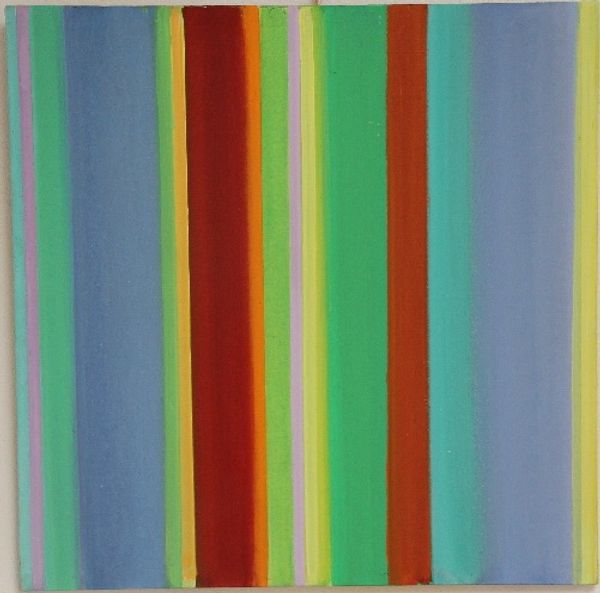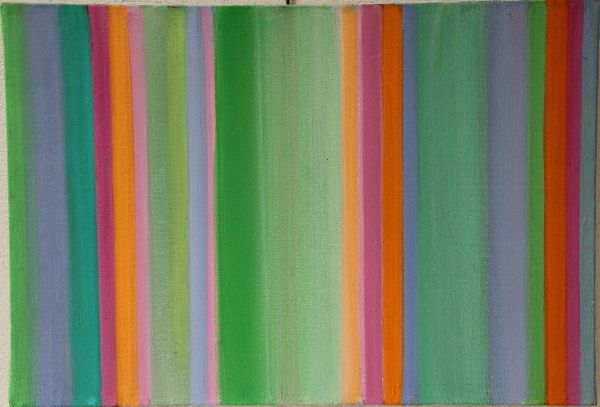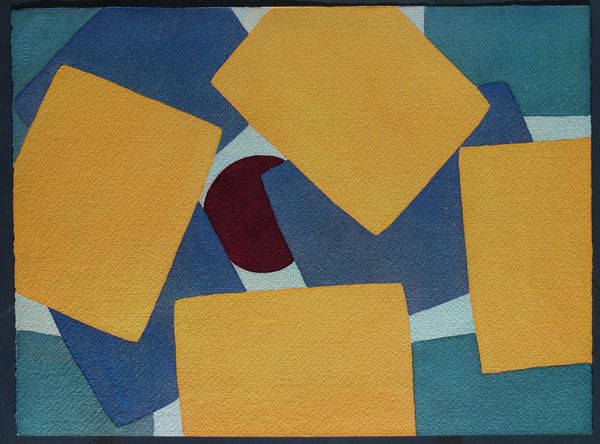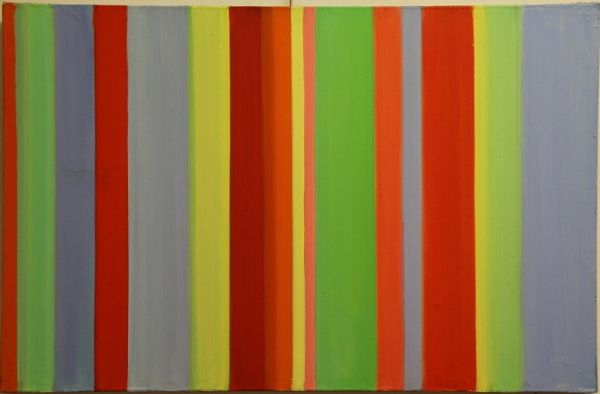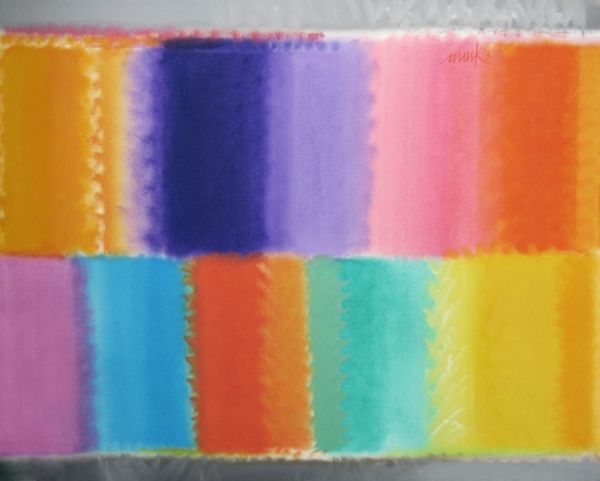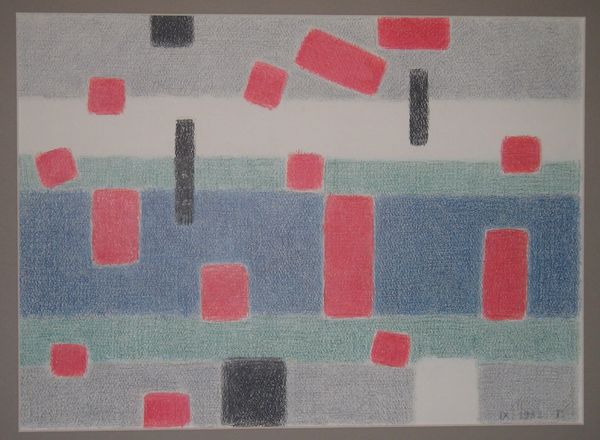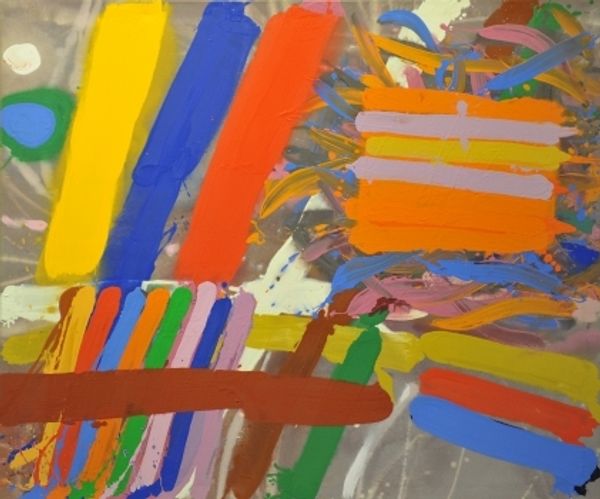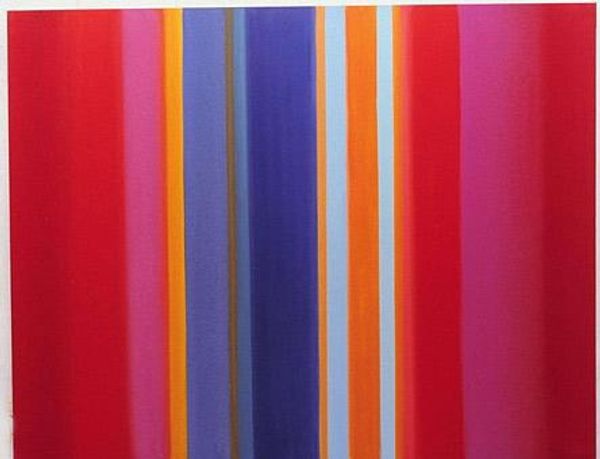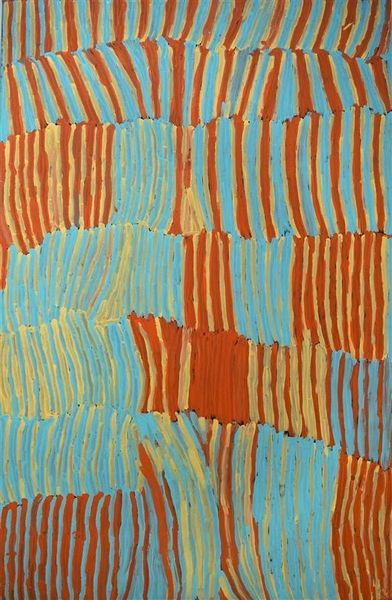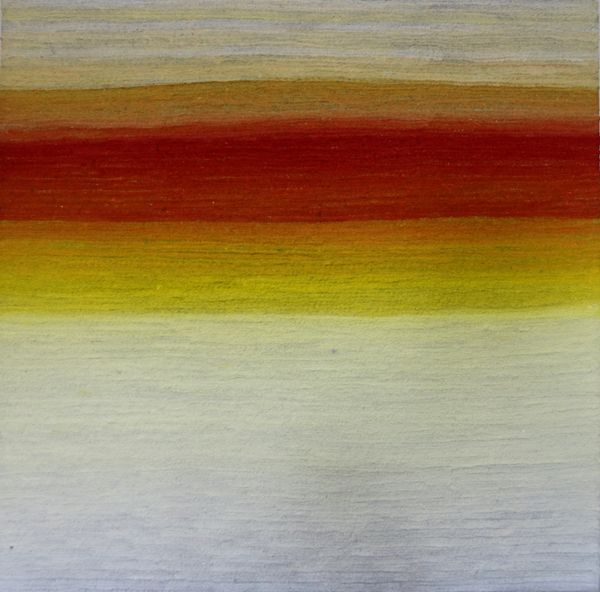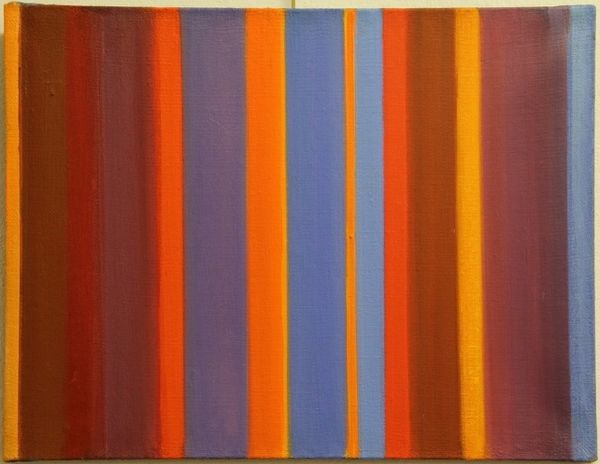
painting, paper, watercolor
#
water colours
#
painting
#
colour-field-painting
#
paper
#
watercolor
#
geometric-abstraction
#
abstraction
#
line
#
watercolor
Copyright: Michel Carrade,Fair Use
Editor: We’re looking at an Untitled work, likely a painting, by Michel Carrade. It's made using watercolours on paper and features a geometric, colour field style. It’s surprisingly calming despite the blocks of colour, almost like looking at a sunset in strips. How would you interpret this piece in the context of art history? Curator: Colour Field painting often explores the emotional impact of pure colour and form, and its rise can be linked to a broader shift in the art world away from representational art after World War II. Consider, the social and political environment, particularly anxieties around technology and the search for meaning in a rapidly changing world. Does this work’s calming effect, as you noted, act as a sort of visual solace against that backdrop? Editor: That’s interesting; I hadn’t considered the historical context impacting abstraction so directly. Were there specific artistic movements influencing Carrade's choice to work with these kinds of colours? Curator: Definitely. The legacy of early abstraction, movements like Bauhaus which aimed to merge art, craft, and technology into a unified aesthetic are important. The embrace of pure abstraction and emphasis on the surface plane were not merely aesthetic choices, but reflected a desire for a universal, accessible visual language. What role do you think the slightly irregular lines between colours have? Editor: They soften the stark geometry. Instead of being cold, it feels more human. Maybe a subtle rebellion against the uniform aesthetic you mentioned? Curator: Perhaps. And by the time Carrade was working, institutions were far more accepting of abstraction. The market also played a role; abstraction became increasingly valuable. Considering its “Untitled” nature, how much does our own social context dictate our viewing, or does the artist leave room for us to fill that void? Editor: That’s a fascinating point. It highlights how art and its reception are shaped not just by the artist, but by the society observing it. I’ll definitely view abstract works differently now! Curator: It's crucial to acknowledge the many levels upon which we view art. Thanks to our conversation, I see anew this work as an intersection of socio-cultural forces and personal artistic choices.
Comments
No comments
Be the first to comment and join the conversation on the ultimate creative platform.
